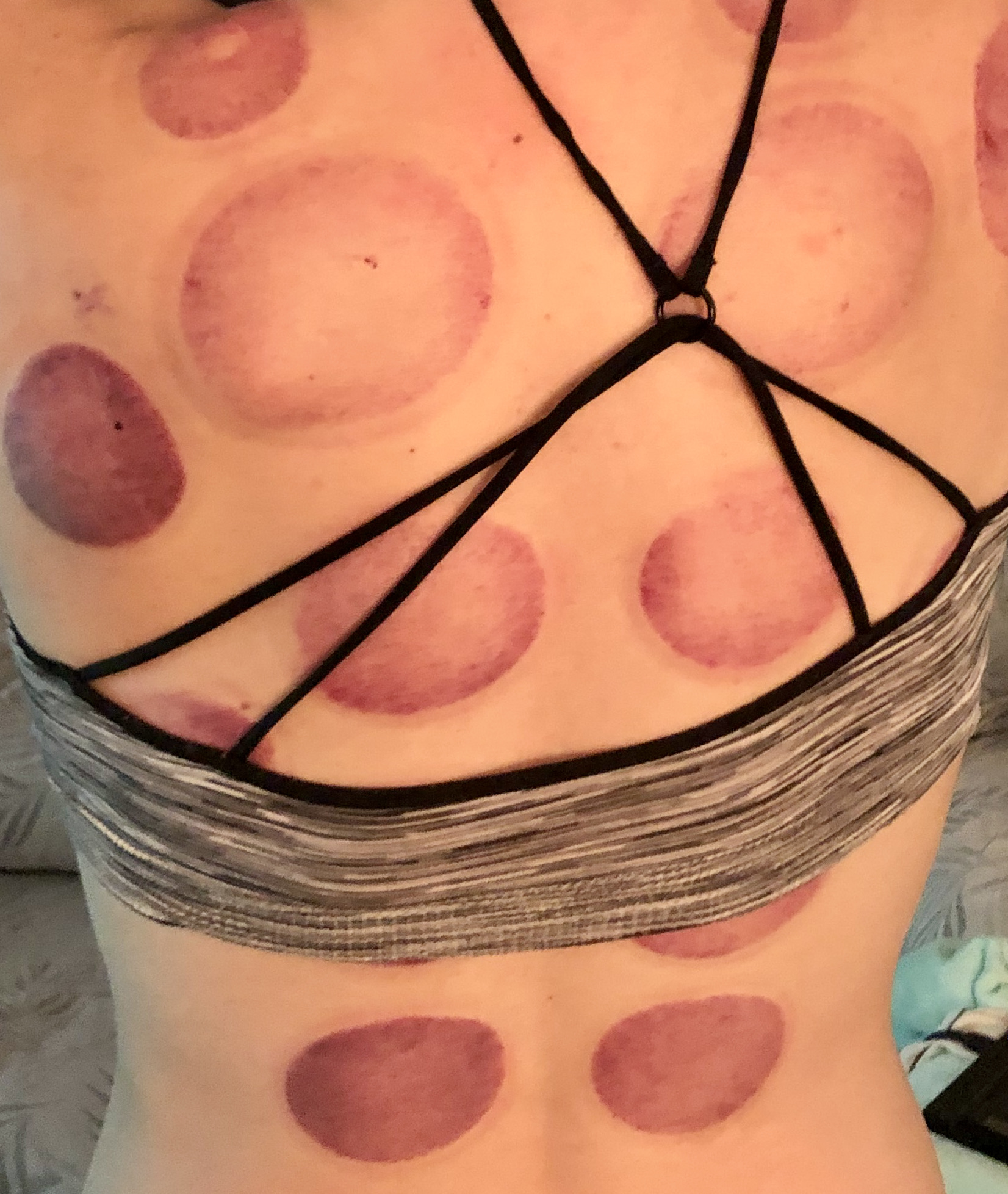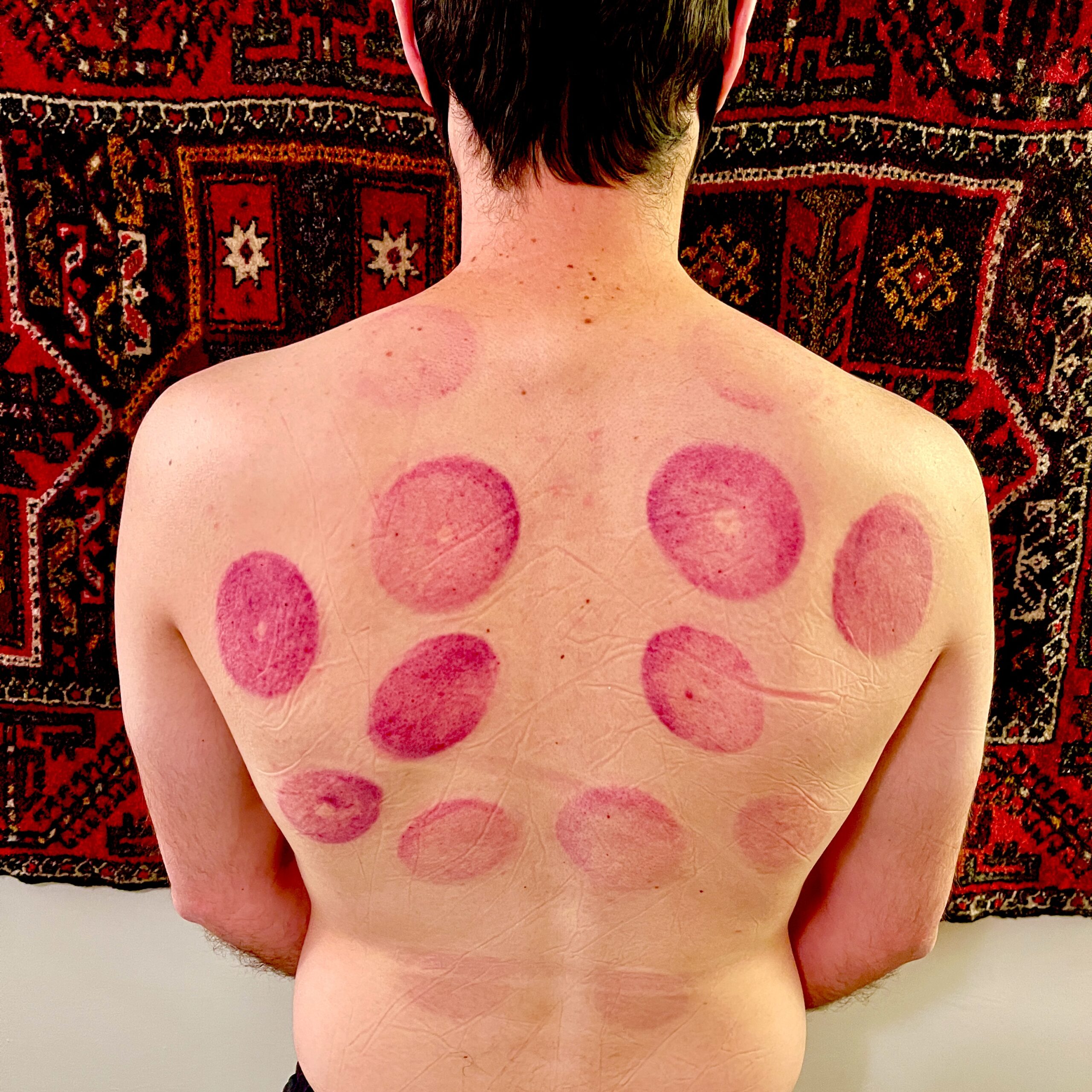
What Are Cupping Marks?
Cupping marks are the superficial brusing to the skin and tissue just below the skin that occurs as a typical response to cupping treatment. Cupping marks are harmless, and actually a desireable side effect of the cupping process.
The process of cupping breaks up adhesions in the fascia, creating microtears of the capillaries in the process.
Now your body has to rush fresh blood into the tired, inflammed muscles and fascia. This help to flush out the lactic acid and other natural toxins that develop with chronic tight and shortened muscles.
Cupping therapy is an excellent adjunct to dry needling therapy for myofascial pain.
Dry Needling for Pain
Myofasical pain is chronic pain associated with chronically tight muscles and fascia and activated trigger points .
When you come in for a dry needling treatment, I do the dryneedling first, with or without electrostim, to release locked tight muscles and fascia by releasing triggerpoints and stimulating the motor points of the muscles.
This cause the muscles and fascia to return to their normal legnth…
Cupping to Break Up Adhesions in the Fascia
We follow that with cupping to break up adhesions in the superfcial layers of fascia..
in the process microtears of the capillaries occur, which is a good thing.
This way new blood rushes in and flushes out lactic acid and other natural toxins that occur with chronic myofascial tightness
How Long do Cupping Marks Last?
This depends on both the stregnth of the suction at the time of cupping and the individual. Some folks cupping marks are very very dark. This reflects the level of tension that was in your muscles and fascia.
Those marks could last a week or two. The do gradually fade after 2-3 days.
But some folk with darker meditterenean olive skin find their marks last even longer. I cant say why, but its been my experience.
Do I always do cupping therapy with dry needling or acupuncture?
No I dont. I always want to try it. But If you have never had dry needling before, then i wait till the second session to try cupping. This eliminates variables, so i can see how the dry needling is by itself.
Some folk have already had cupping, and did not like it, so in those cases, no cupping.
Does everyone like cupping?
I find that about 50% of my patients love cupping, rough estimate. About 25% dont like it at all, and 25% are neutral. I never ask someone who dislikes cupping to get do it. There is no need, because the dry needling is already so effective…
I


